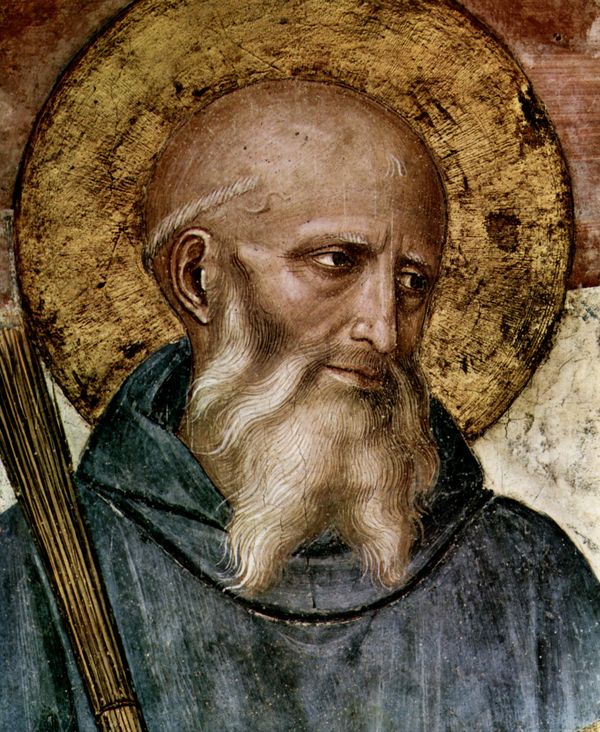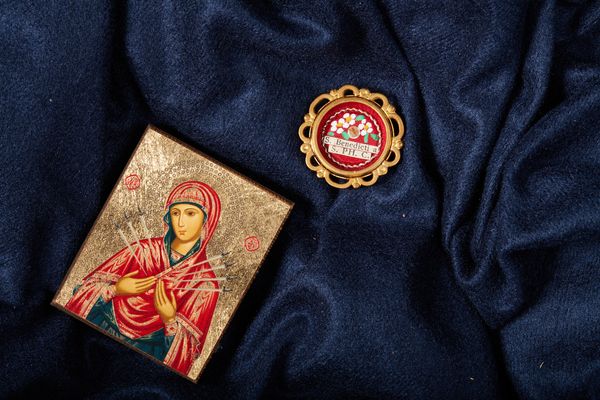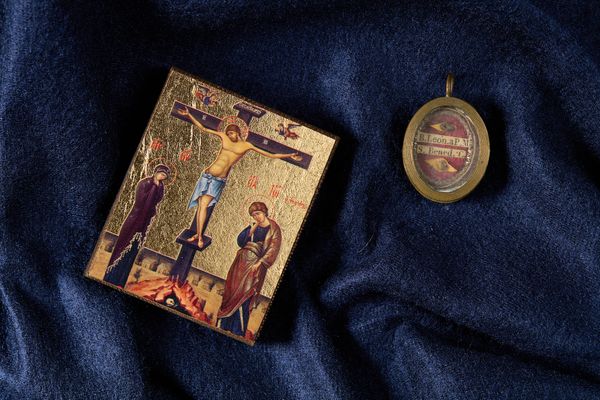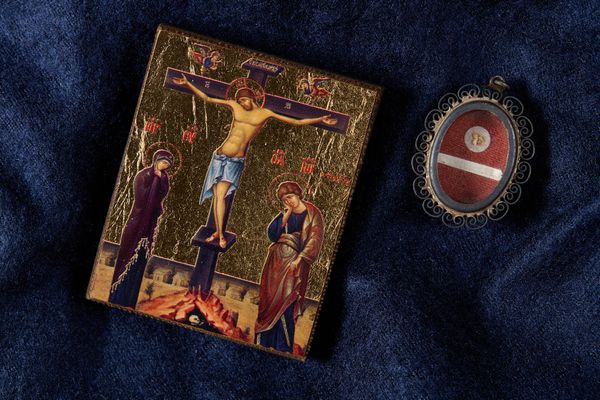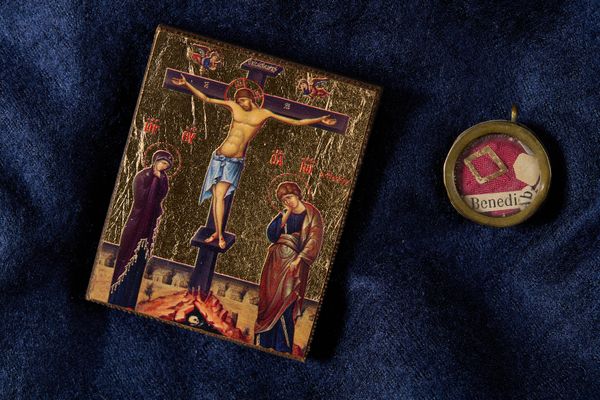The future, “Father of Monks,” was born in 480 A.D. at Norcia, about 70 miles from Rome. At a young age he left his studies at Rome in pursuit of a life of sanctity and spiritual perfection. He soon settled in the remote area of Subiaco and lived in a cave for three years under the direction of a hermit named Romanus. After the death of Romanus, Benedict accepted the invitation of some nearby monks to be their abbot. The monks, however, were quite wayward and would not take the counsels of Benedict and conspired to poison him. Saint Benedict suspecting their evil intent blessed the goblet of poisoned wine offered him, whereupon it shattered.
He then went back into his solitude for a short period of time. Thus he left the group and went back to his cave at Subiaco. There lived in the neighborhood a priest called Florentius who, moved by envy, tried to ruin him. He tried to poison him with poisoned bread. When he prayed a blessing over the bread, a raven swept in and took the loaf away. From this time his miracles seem to have become frequent, and many people, attracted by his sanctity and character, came to Subiaco to be under his guidance. Having failed by sending him poisonous bread, Florentius tried to seduce his monks with some prostitutes. To avoid further temptations, in about 530 Benedict left Subiaco. He founded 12 monasteries in the vicinity of Subiaco, and, eventually, in 530 he founded the great Benedictine monastery of Monte Cassino, which lies on a hilltop between Rome and Naples.
There in Montecassino where he wrote for his monks a rule somewhat tempered from the severity of Eastern Monasticism. The “Rule of Saint Benedict” became the norm for all Western Monasticism and is still practiced today by Benedictines the world over. The Benedictine Order has given the Church over 57,000 known saints and 35 popes, of whom 17 are Saints or Blesseds.
Saint Benedict’s twin sister, Saint Scholastica, founded an order for nuns based on the same rule of life. While praying one day, Saint Benedict saw in a vision the death of his sister and her soul rising toward Heaven in the form of a dove. She died on February 10, 543 A.D., 40 days before his death on March 21st. They are both buried in the Cathedral of Montecassino. Pope Saint Gregory the Great-a Benedictine-wrote the life of Saint Benedict.
The St. Benedict Medal
The medal of St. Benedict was first struck in 1880 to commemorate the fourteenth centenary of Benedict's birth and is also called the Jubilee Medal. In 1647, during a witchcraft trial at Natternberg near Metten Abbey in Bavaria, the accused women testified they had no power over Metten, which was under the protection of the cross. An investigation found a number of painted crosses on the walls of the abbey with the letters now found on St Benedict medals, but their meaning had been forgotten. A manuscript written in 1415 was eventually found that had a picture of Benedict holding a scroll in one hand and a staff which ended in a cross in the other. On the scroll and staff were written the full words of the initials contained on the crosses. Medals then began to be struck in Germany, which then spread throughout Europe. This medal was first approved by Pope Benedict XIV in his briefs of 23 December 1741 and 12 March 1742.
The medal of St. Benedict originally came from a cross in honor of Saint Benedict. On one side, the medal has an image of Saint Benedict, holding the Holy Rule in his left hand and a cross in his right. There is a raven on one side of him, with a cup on the other side of him. Around the medal's outer margin are the words "Eius in obitu nostro praesentia muniamur" ("May we be strengthened by his presence in the hour of our death").
The other side of the medal has a cross with the initials CSSML on the vertical bar which signify "Crux Sacra Sit Mihi Lux" ("May the Holy Cross be my light") and on the horizontal bar are the initials NDSMD which stand for "Non-Draco Sit Mihi Dux" ("Let not the dragon be my guide").
The initials CSPB stand for "Crux Sancti Patris Benedicti" ("The Cross of the Holy Father Benedict") and are located on the interior angles of the cross. Either the inscription "PAX" (Peace) or the Christogram "IHS" may be found at the top of the cross in most cases.
Around the medal's margin on this side are the Vade Retro Satana initials VRSNSMV which stand for "Vade Retro Satana, Nonquam Suade Mihi Vana" ("Begone Satan, do not suggest to me thy vanities") then a space followed by the initials SMQLIVB which signify "Sunt Mala Quae Libas, Ipse Venena Bibas" ("Evil are the things thou profferest, drink thou thine own poison").
Credits:
Discriptions of saints lives and biographies have been excerpted, summarized, or compiled from
Franciscan Media,
CatholicSaints.Info,
Catholic Online, and
Wikipedia.
